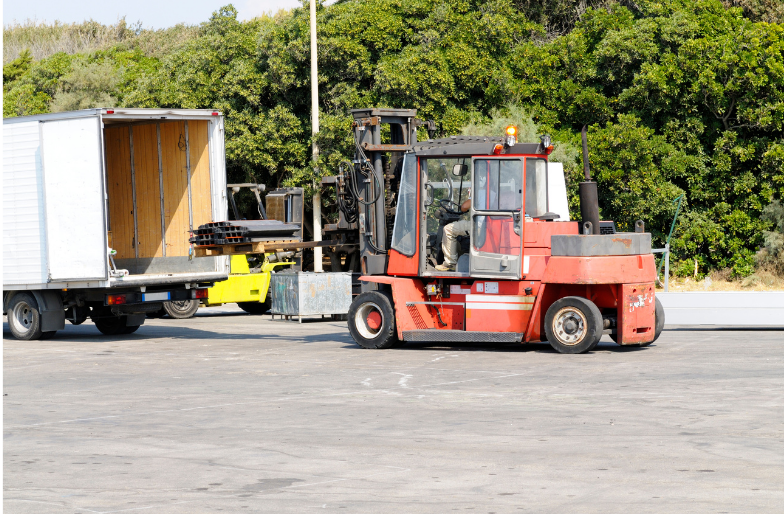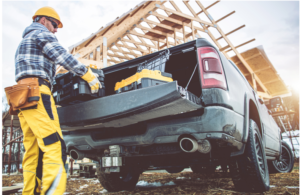
Don’t be fooled by the term “marine” in inland marine insurance, a kind of insurance that covers property shipped over land. The coverage was first offered by ocean marine insurers, so the word “inland” distinguishes it from cargo shipped by sea.
Today, many insurers offer this coverage, with a number of policies available for specific industries and types of property. Inland marine insurance can protect just about anything that needs to be moved by rail or truck or temporarily stored by a third party. Equipment and property insured by inland marine might include trade show exhibits, fine art and photography, computer equipment, and medical and scientific equipment.
Inland marine is also written to cover equipment and infrastructure that facilitates transportation or communication such as railway systems, bridges and cell towers. Other coverages include riggings, renewable energy equipment, rolling stock, contracting equipment, entertainment and special events, musical instruments, grooming equipment, artisan tools, vending machines, and signs and billboards.
Two specialty coverages you may be familiar with – builders risk and bailee coverage – are actually a form of inland marine insurance.
- Builders risk covers a construction project while it’s being built. Owners, contractors and architects can purchase these policies to insure against property damage and losses, theft on a job site and business interruption. They can be written for new residential and commercial construction, remodeling and renovation, and installations through an installation floater policy. Installation floater coverage is often purchased by plumbers, electricians and craftsmen who need to insure materials required for a job from the point they are shipped until they are installed.

- Bailee coverage protects businesses such as dry cleaners, auto repair shops and storage facilities that have customers’ property in their possession. In the insurance world, a bailee is someone who has temporary custody, control or care of another’s property. Your general liability or business property insurance doesn’t cover a customer’s personal property, which is why you would need this additional protection.
Who needs inland marine insurance?
Most businesses have commercial property insurance or a business owners policy (BOP) that protects their property at a fixed location. Property insurance sometimes provides limited coverage for equipment transported to a job site, but often it doesn’t protect property that is in transit or stored away from the main business location. Even if your property insurance protects your equipment when it’s away from your main office, it may not provide enough coverage for high-value items.
If you frequently transport expensive items to various locations, such as property for performances, artwork for display or sale, or scientific instruments for use in the field, you likely will need an inland marine policy.
Inland marine is also available for personal property that needs to be shipped or stored. For example, if a package is delivered to your door but is stolen before you can retrieve it, an inland marine policy would cover your claim. Inland marine typically pays for lost and damaged property in excess of the shipper’s declared limit. The U.S. Postal Service and many commercial shippers don’t offer any insurance for certain types of valuables or cash, or they limit the declared value to a nominal amount.
While not everyone needs inland marine insurance, you should consider it if you can answer yes to any of these questions:
- Do you transport a lot of packages or transport property over land?
- Do you transport items that are of high value?
- Do you store items in a warehouse or on another person’s property?
- Do you have custody of customer items or property?
- Do you use a vehicle for business that is constantly on the go?
- Do you need to transport equipment or tools between locations?
Types of coverage
Inland marine can be purchased as “named peril” coverage or “all-risk” coverage. Named peril coverage protects you only from perils that are listed in the policy. All-risk coverage covers all types of perils, unless the policy states otherwise. All-risk is generally more comprehensive and better for insuring expensive items.
Inland marine insurance can also be used to insure personal items in your home. They need not be in transit to be covered. Since homeowners and renters policies have limits on how much they’ll pay in claims, you may want to consider inland marine for antiques, jewelry, china and silver, fine art and collectibles. Musical instruments, computers and even golf clubs can be insured.
Often policies have low or no deductibles, making them an attractive way to reduce the financial risk from lost or stolen valuables. Policies are usually written on either a replacement cost basis or an actual cash basis. With the replacement cost basis, the policy will usually pay for a replacement that is of “like kind and quality.” With the actual cash basis, the insurance company will reimburse you for the replacement value, minus the depreciation. As a consequence, you may receive significantly less if you opt for the actual cash basis method.
Inland marine policies are also designed to cover specific situations such as:
- Property that is stored off-site or at a customer’s site, such as a vending machine or product display
- Property that is stored in a vehicle, such as a repair truck or food truck
- Equipment used for communication or transportation
- Cargo you transport for a customer
Be aware that certain items are almost never covered by inland marine:
- Items shipped by sea or by airplane (this is covered by either ocean marine or air cargo insurance, although some insurers offer commercial cargo insurance that covers air, land and sea)
- Property that stays at your main business location (this is covered by property insurance)
- Your cars or business vehicles (these are covered by business auto insurance)
- Damage prior to shipment (this may be covered by your property insurance or a separate inland marine policy designed to insure valuable property such as art or jewelry)
An insurance professional can help you
If you need inland marine coverage or would like to learn more, give us a call, a Cheney representative can answer any questions you may have about your current risks and make sure you have the protections you need.
Reposted with permission from original author. Applied Systems Inc.
